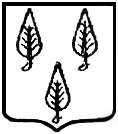Woodhall House... before 1707

This leaf motif was the emblem of the Foulis family as outlined in this drawing by Alison McLeay from the book on the History of Woodhall House by Fay Cumming
Woodhall House stands on the south bank of the Water of Leith, protected by mature trees. It was to become the big house of the village of Juniper Green.
Woodhall was originally Crown land, part of the Barony of Redhall. The estate was first mentioned in a list of Charters of David II in 1329 and was leased to Alexander Menzies of Woodhall who was one of Robert the Bruce's stalwart supporters. In 1374 Woodhall was settled on Sir William Cunningham of Kilmaurs by Murdoch Stewart, Earl of Fife. In 1400 the Charter was confirmed by Robert Stewart Duke of Albany and Governor of Scotland. Sir William Cunningham married the eldest of the co-heiresses of Sir Robert Denniston and received the Baronies of Redhall and Colinton.
One of the highlights of the house is the plaster ceiling dating from 1630. The ceiling features St Andrew's Cross, the Thistle, the fleur de lys, a rose, crown and scepter, a lion rampant and the motto "Nobis haec invicta miserunt 108 proavi" which roughly translates to "To us 108 ancestors have sent these unconquered things."
The house and lands stayed in the Cunningham family until near the end of the seventeenth century when Sir John Foulis of Ravelston acquired Woodhall. The name Foulis is reckoned to be of Norman origin after incomers who settled in Scotland in the reign of Malcolm III (1056 - 1092). Their heraldic emblem was three bay leaves. Others think it comes from the Gaelic word "foghlais" which means "rivulet".
The Foulis family found themselves in high places in the Scottish Court and held lands in Perthshire, Angus and Ross and Cromarty. They claim royal descent with, included in their family tree, Robert the Bruce, Edward I of England, Philip IV of France, Edward the Black Prince and James I of England and Scotland.
Sir John Foulis comes down through history in part due to his meticulous account books in which he kept a record of his spending. He was a happy man, kindly husband to four wives and father to fifteen children. He was born in 1638 and he died in 1707 just as the village of Juniper Green was mentioned for the first time in a written document.
